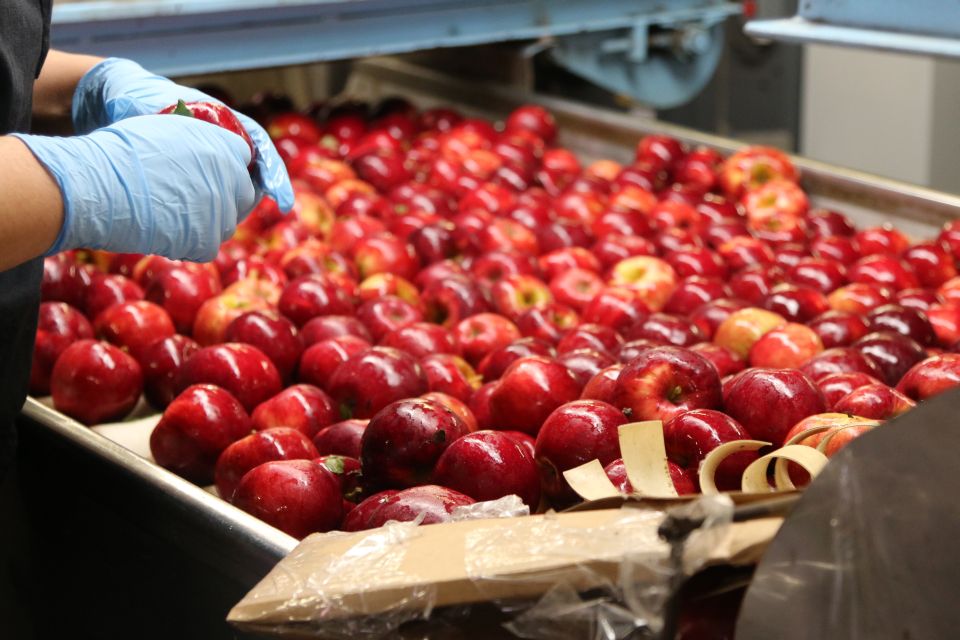Watch Out for Flea Beetles in Leafy Vegetables and Cole Crops
In American Vegetable Grower’s 2024 State of the Vegetable Industry survey, flea beetles were listed as one of the often-mentioned pests that growers found problematic. And for good reason. Flea beetles can be serious pests of vegetables, and if not controlled, can cause significant crop losses and cosmetic damage to leafy vegetables and cole crops.
There are several flea beetle species that occur in vegetable crops, but in the western U.S., one of the most damaging species is the palestriped flea beetle, Systena blanda. The adult beetles are about three-sixteenths of an inch long and can be identified by two pale, yellow stripes along a brown back (elytra). They have enlarged hind legs that gives them the ability to jump when approached, thus the name “flea beetle”.
Flea beetle immatures are small, white larvae with three pairs of legs and a dark head. They develop in the soil and feed on the roots of host plants.
Damage
Although some flea beetle species are host specific, the palestriped flea beetle has a very broad host range, and is considered an economic pest in all leafy vegetables and cole crops. They can also be found on field crops including alfalfa, corn, cotton, sugar beets, Sudan grass, as well as many weed species including purslane, lambsquarter, and pigweed.
The adults do most of the damage to foliage of leafy vegetables and cCole crops.
The greatest damage from palestriped flea beetle is caused by adults attacking the emerging cotyledons of direct-seeded plants and tender new growth of new transplants during stand establishment. When numbers are high, they have been known to devour entire cotyledons or outright kill small seedlings. Transplants and larger seedling plants can sustain significant feeding damage on the terminal growing points or newly emerged leaves.
Excessive feeding can stunt plant growth and result in lack of stand uniformity and delayed crop maturity at harvest. Older plants rarely suffer economic damage, but feeding on leaves of baby leaf lettuce, spinach, and arugula can cause cosmetic damage and seriously reduce quality and yields.
Larvae generally do not damage leafy vegetables crops with the exception of radish, where larvae have been found to feed on developing bulbs, often rendering them unmarketable.
Management
Flea beetles are most active on warm days but can be found feeding on crops throughout the year in western vegetable- growing regions. Because adult beetles are highly mobile and readily disperse from field crops and weeds onto emerging vegetable crops, scout newly emerged seedlings for damage frequently during stand establishment until plants are well established.
Infestations are often heaviest on field edges, but be sure to thoroughly scout within fields. Keep in mind, relatively low populations can cause economic damage when plants are in the cotyledon or first true-leaf stage.
Cultural management can help reduce sources of flea beetles that may invade produce fields. It is important to control weeds in and around the field that can host flea beetles. In Arizona and Southern California, experience has shown that leafy vegetables planted adjacent to weedy areas are at a high risk from palestriped flea beetle attacks.
When nearby field crops are harvested, flea beetle adults typically move rapidly to nearby leafy vegetables and cole crops. Because field crops can harbor large numbers of beetles, it is important to destroy plant residue immediately after harvest.
There are a few natural predators and parasites that can attack flea beetles. However, these natural enemies generally will not control flea beetles invading seedling vegetables.
Because flea beetles can quickly invade young vegetable seedling stands, it is important to prevent them from feeding for prolonged periods of time. This is most commonly achieved with well-timed insecticide applications. Consider insecticide applications if you find damaged plants throughout the field, or if you can readily find beetles in the field.
A single insecticide application will usually prevent damage. Most registered insecticides can provide three to five days of effective residual control on small seedlings and transplants. However, under heavy beetle pressure, repeated sprays may be necessary to control new beetles that re-invade the field from nearby crops and weeds. It is recommended that insecticides be applied during the day when adults are most active in the field.
In conventional production, contact insecticides applied via overhead sprinkler chemigation (i.e., pyrethroids) or foliar sprays can cost-effectively minimize flea beetle infestations and damage to leafy vegetable cole crops during stand establishment. One particularly effective insecticide, Endigo ZCX (thiamethoxam+lambda cyhalothrin) has been shown to provide up to five days of residual control when applied as a foliar spray application.
Pre-plant application of soil systemic neonicotinoids and diamide insecticides do not adequately control flea beetles on newly transplanted or emerging direct seeded crops. However, insecticide seed treatments are available for lettuce and broccoli that will protect stands (i.e., NipsIt; clothianadin). Trials in Arizona have shown good seedling protection from flea beetles with NipsIt for up to 21 days.
In organic production, control of palestriped flea beetle is challenging. Row covers can be used to cover plants, particularly in small plantings, but can be labor intensive and expensive in large fields. A tank mixture of Entrust (spinosad) and Pyganic (pyrethrin) have been shown to provide suppression of adults in organic crops. However, under even light beetle pressure, repeated applications are often required to provide seedling protection.























